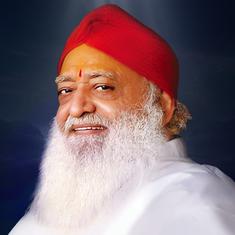However, few people realise that there’s a full, compulsory paper in the main civil services exam that tests only the English language. More importantly, the protestors have barely uttered a word against this paper.
“The movement is not anti-English. It is not pro-Hindi,” Niranjan Kumar, a professor of Hindi at the Delhi University, told Scroll.in. "The issue is the need for a level playing field and fair competition for all aspirants."
The Delhi High Court used a more technical argument to make the same point in a 2013 order in response to a petition by teacher-turned-activist Dinanath Batra, who is said to be heading the Rashtriya Swayamsevak Sangh’s panel to “saffronise” education.
“Here, the challenge is not to any action developing the use of Hindi language, but to the inclusion of test of English language in the competitive segment of the examination on the ground that the same is to the detriment of the non-English speaking aspirants to the civil services,” wrote Justice Rajiv Sahai Endlaw in his order asking the government to look into the petitioner’s concerns.
So how can one English exam section be more detrimental than another?
The difference lies in the way the two are evaluated, and what that means for an applicant. Ever since the Union Public Services Commission introduced the new Common Scholastic Aptitude Test in 2011, there have been demonstrations against the re-jigged format. Many saw it as a direct attempt to court the “urban engineering types” in a way that made it much harder for rural, non-English speaking aspirants who were more familiar with the humanities to get through.
There are two parts to the exam: the preliminaries, aimed at screening the hundreds of thousands who take the UPSC exam every year, and the mains, which determine who gets to the final interview stage. While the prelims only feature about eight-ten questions that evaluate English proficiency, the mains have an entire paper testing English language usage.
The difference is that the main English paper merely needs to be passed. Doing better or worse on it does not affect an aspirant’s final score. Essentially, this tests simply a minimum capability in English, but doesn't give candidates any advantages for excelling at the language. That's why it hasn't been targetted by the protestors.
In the prelims, however, the proficiency questions count towards a final score – giving those who are better at English a leg-up. All of the other questions on the prelim exam can be taken in Hindi (hilariously translated using Google Translate in many cases), but the English proficiency portion is only to be taken in English, giving a clear advantage to English-medium students.
“CSAT screening should not be based on English language,” said Praveen, a civil services aspirant who has been part of the demonstrations against the current format. “English is important, but you should give people time to learn and imbibe it. And it’s not just about the English language. It’s about favouring the English language at the cost of regional languages.”
Kumar echoed this view, contending that including an English proficiency test discriminates against those who went to Hindi- or Tamil- or Oriya-medium schools, because it evaluates their proficiency in one language rather than their ability to communicate in general.
“Language is never a test of knowledge, just of communication skills," he said. "Had language been the same as knowledge, and English been the best, the Chinese would not be so far ahead in development. Neither would the Germans or the Japanese.”
The professor says he filed Right to Information requests to determine the profile of students making it past the prelims to the mains over the last few years. Under the old system, the ratio of English-medium students to those who were instructed in other languages was 55:45. But the numbers changed to 80:20 after the CSAT was introduced in 2011, he said.
“What the students are demanding right now is justified," Batra told Scroll.in. "There is no level-playing field and there needs to be a level-playing field.” But he said he would wait to see the order himself before reaching a conclusion.
Across the board, the activists had similar reactions to the government’s move on Monday not to count the scores of the English proficiency section of the prelims this year. Many are carrying on with their agitation, built around the argument that the exam favours the urban elite. The Bharatiya Janata Party's youth wing has particularly been pushing this line, along with a few Leftist student organisations.
Others from beyond the Hindi belt are asking for a language-proficiency test, but one that gives aspirants the option of choosing any one of the 22 scheduled languages. Some have even suggested that, just as civil service officers posted to a state like Tamil Nadu are required to learn Tamil after they have been transferred there, aspirants who need better English can be coached after selection.
With the protesters planning to continue their demonstrations despite the temporary suspension of the English proficiency portion of the exam, it should become clear that pro- or anti-English politics are not the central fault line in this battle.










